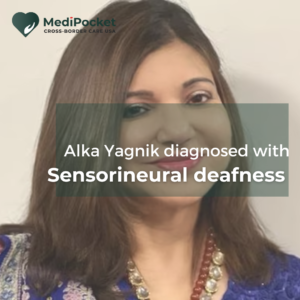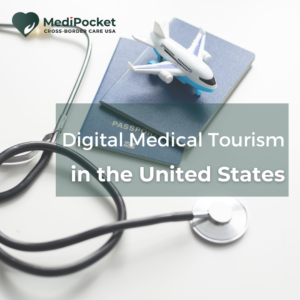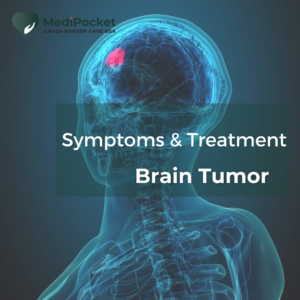Osteoporosis is a medical disorder characterised by weaker bones that are more prone to breaking or fracture. It is a bone disease that causes bone density loss, resulting in bone thinning and degeneration. Both men and women are affected by osteoporosis, however it is more frequent in women after menopause. The disease affects more than 200 million people throughout the world.
Osteoporosis is caused by an imbalance in bone tissue development and breakdown. Bone is a living tissue that is continually breaking down and replacing itself. As people get older, the rate of bone breakdown increases while the rate of new bone creation decreases, resulting in a loss of bone density.
Risk factors of osteoporosis
There are various risk factors that contribute to the development of osteoporosis. Some of these elements can be adjusted or managed, while others cannot. The following are some of the most important risk factors for osteoporosis:
- Age: As people become older, their chances of developing osteoporosis rise.
- Gender: Women are more prone than males to acquire osteoporosis. Women also lose bone mass more quickly than males, especially after menopause.
- Family history: Since osteoporosis runs in families, persons with a family history of the disorder are at a higher risk.
- Ethnicity: Individuals of Asian or Caucasian heritage are more likely to develop osteoporosis than persons of African descent.
- Low body weight: Individuals who are underweight or have lost weight quickly are more likely to develop osteoporosis.
- Smoking: Smoking increases the risk of osteoporosis through interfering with the body’s capacity to absorb calcium.
- Excessive alcohol intake: Excessive alcohol use can raise the risk of osteoporosis by interfering with the body’s capacity to absorb calcium.
- Physical activity: Individuals who are not physically active are more likely to develop osteoporosis because regular exercise helps preserve bone density.
- Medical conditions: Some medical diseases, including rheumatoid arthritis, celiac disease, and hyperthyroidism, might raise the risk of osteoporosis.
- Medications: Certain drugs, such as corticosteroids and anticonvulsants, have been linked to an increased risk of osteoporosis.
Symptoms
Osteoporosis is known as the “silent illness” because it frequently goes undetected until a bone breaks or fractures. Many people might not recognize they have osteoporosis until they shatter a bone, which commonly occurs in the hip, spine, or wrist.
When osteoporosis produces bone fractures or breaks, the following symptoms may occur:
- Back discomfort: A vertebral fracture or collapse can produce significant back pain, particularly in the lower back or neck.
- Height loss: As the bones of the spine weaken and collapse or compress, it can result in a perceptible loss in height over time.
- Stooped posture: A rounded or slumped posture, sometimes known as a “dowager’s hump,” can be caused by spine fractures.
- Bone fractures: Osteoporosis weakens the bones, making them more prone to fractures, particularly in the hips, wrists, and spine.
Additional symptoms related with osteoporosis may include:
Weaker grip strength: Osteoporosis can result in a decrease of hand strength, which can be evaluated by a weaker grasp.
Teeth loss: Research have revealed that persons with osteoporosis are more likely to lose their teeth, probably due to weakening jawbones.
Receding gums: Osteoporosis may be associated with receding gums, which can cause dental sensitivity and make chewing more difficult.
Diagnosis of osteoporosis
Osteoporosis is normally diagnosed using a combination of medical history, physical examination, and imaging testing. Below are some of the most common ways for detecting the condition.
Dual-energy X-ray absorptiometry (DXA): this is the most often used technique to detect osteoporosis. It is a non-invasive, painless test that determines bone mineral density in the spine, hip, and other parts of the body.
Other imaging tests: Additional imaging tests, such as X-rays, CT scans, or MRI scans, may be used to diagnose osteoporosis or discover fractures in some circumstances.
Blood testing: Blood tests can aid in the identification of underlying medical diseases that may contribute to the disease, such as thyroid issues or vitamin D insufficiency.
Urine testing: Urine tests can assist detect how rapidly bone is broken down and can be used to track the efficacy of osteoporosis therapies.
Fracture risk assessments: Depending on criteria such as age, gender, medical history, and lifestyle, healthcare practitioners may use a variety of techniques to estimate a person’s risk of fracture.
Regular screening may also be advised for women over the age of 65, males over the age of 70, and anyone with specific medical problems or a history of fractures.
Treatment
Osteoporosis is often treated with a mix of lifestyle modifications, medicines, and other therapy. Here are some of the most common treatment options:
- Lifestyle changes: Lifestyle modifications such as regular exercise, a nutritious diet rich in calcium and vitamin D, and avoiding smoking and excessive alcohol intake can all help to preserve bone health and prevent additional bone loss.
- Medications: There are several drugs available to assist prevent additional bone loss and lower the risk of fractures. Bisphosphonates, selective oestrogen receptor modulators (SERMs), hormone replacement therapy (HRT), and monoclonal antibodies are examples of these.
- Supplements: Calcium and vitamin D supplements may be advised to assist maintain bone density and minimize the risk of fractures.
- Fall prevention: Fall prevention is an important part of osteoporosis treatment. Making adjustments to the home environment, such as reducing dangers and adding handrails, as well as participating in balance and strength training activities, may be part of this.
- Physical therapy: Physical therapy may be advised to assist improve posture, balance, and strength, lowering the risk of falls and fractures.
- Surgery: In severe cases of osteoporosis, surgery may be needed to repair or replace fractured bones.
Preventive measures
There are various things you may take to help prevent or reduce the onset of osteoporosis if you’ve already been diagnosed. Here are some of the most important measures to avoid osteoporosis:
Obtain adequate calcium and vitamin D: Calcium and vitamin D are required for strong bones. Calcium-rich foods include dairy products, leafy green vegetables, and fortified meals. When exposed to sunshine, the skin produces vitamin D, but it may also be received from meals such as fatty fish and fortified foods.
Exercise on a regular basis: Weight-bearing and resistance workouts can aid in the maintenance of bone density and strength. Walking, jogging, weightlifting, and yoga are among examples.
Prevent smoking and excessive alcohol consumption: Both smoking and excessive alcohol consumption can lead to bone loss and raise the risk of fractures.
Test for and treat the following medical disorders that can lead to osteoporosis: Hyperthyroidism, inflammatory bowel disease, and celiac disease can all contribute to bone loss, thus screening for and treating these illnesses is critical.
Take measures to avoid falling: While falls are a frequent cause of fractures, taking steps to avoid falling can help minimise the risk of fractures. This may entail eliminating potential dangers from the home, adding handrails and grab bars, and engaging in balance and strength training activities.
Consider medications: Bisphosphonates, SERMs, and hormone replacement treatment can help prevent additional bone loss and lower the risk of fractures in high-risk individuals.
While osteoporosis is asymptomatic, it is recommended that everyone get frequent checkups to minimize any last-minute stress.
The United States has a long history of treating endocrine problems with modern technologies and highly skilled specialists. Isn’t it preferable for Indians to receive treatment straight from the United States? This is achievable because of MediPocket World, a cross-border care service that links the greatest physicians in India with people. There is no need to go or obtain a visa; simply subscribe and speak with the greatest specialists available in the United States.













